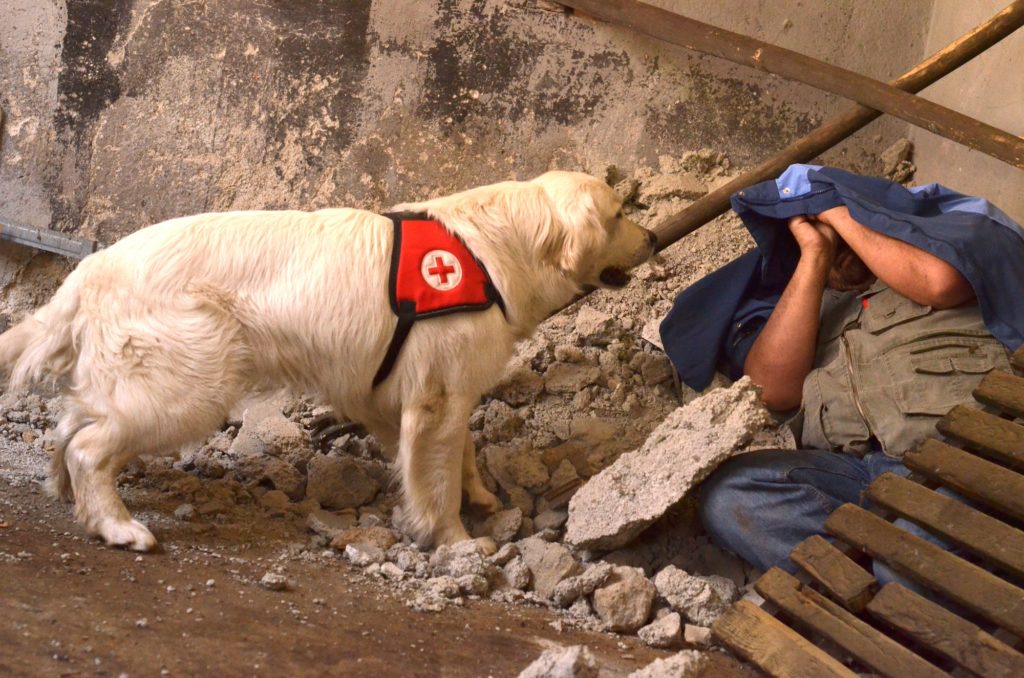 Given that dogs have up to 300 million scent receptors (compared to our 5 million), keen night vision, and super-sensitive hearing, nobody can be surprised that dogs excel at search & rescue work. Experts estimate that a single dog-and-handler team can be as effective in locating missing persons as 20 to 30 people. SAR dogs, long an indispensable part of the law enforcement and emergency services teams that investigate crime scenes, have also become a fixture at disaster sites. We see them with their noses in the rubble, looking for survivors after earthquakes, floods, explosions, tsunamis, mudslides, train or plane wrecks, even avalanches.
Given that dogs have up to 300 million scent receptors (compared to our 5 million), keen night vision, and super-sensitive hearing, nobody can be surprised that dogs excel at search & rescue work. Experts estimate that a single dog-and-handler team can be as effective in locating missing persons as 20 to 30 people. SAR dogs, long an indispensable part of the law enforcement and emergency services teams that investigate crime scenes, have also become a fixture at disaster sites. We see them with their noses in the rubble, looking for survivors after earthquakes, floods, explosions, tsunamis, mudslides, train or plane wrecks, even avalanches.
What makes a great search & rescue dog? Any breed will do, though requirements such as a first-rate nose, strong prey or play drive, stamina, and high trainability place retrievers, shepherds, and collies at the top of the selection pile. Important character traits are friendliness, an even disposition, intelligence, courage, and finally that certain something which, in a human, might be called grit. In SAR work, twelve-hour shifts in cumbersome terrain surrounded by death and devastation aren’t unusual.
Think volunteer SAR work might be for you? Visit the American Rescue Dog Association at ardainc.org

